
伤口世界
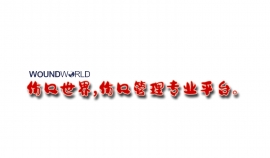
- 星期五, 17 1月 2025
Cyclic cryotherapy with vitamin D facilitates early rehabilitation after total knee arthroplasty
Fulin Li1† , Yingrong Mo2† , Xiao Huang1 , Ke Sun1 , Baichuan Li1 and Dong Yin1 *
1 Department of Joint Surgery and Sports Medicine, The People's Hospital of Guangxi Zhuang Autonomous Region, Guangxi Academy of Medical Sciences, Nanning, China, 2Department of Pharmacy, The People's Hospital of Guangxi Zhuang Autonomous Region, Guangxi Academy of Medical Sciences, Nanning, China
EDITED BY
Philip M. Gallagher,
University of Kansas, United States
REVIEWED BY
Elisa Belluzzi, University of Padua, Italy Jianlin Shen, Affiliated Hospital of Putian University, China
*CORRESPONDENCE
Dong Yin 该Email地址已收到反垃圾邮件插件保护。要显示它您需要在浏览器中启用JavaScript。
† These authors have contributed equally to this work
RECEIVED 01 February 2024
ACCEPTED 12 April 2024
PUBLISHED 29 April 2024
CITATION
Li F, Mo Y, Huang X, Sun K, Li B and Yin D (2024) Cyclic cryotherapy with vitamin D facilitates early rehabilitation after total knee arthroplasty.
Front. Med. 11:1380128.
doi: 10.3389/fmed.2024.1380128
COPYRIGHT
© 2024 Li, Mo, Huang, Sun, Li and Yin. This is an open-access article distributed under the terms of the Creative Commons Attribution License (CC BY). The use, distribution or reproduction in other forums is permitted, provided the original author(s) and the copyright owner(s) are credited and that the original publication in this journal is cited, in accordance with accepted academic practice. No use, distribution or reproduction is permitted which does not comply with these terms.
Objective: This study aimed to evaluate the efficacy of cyclic cryotherapy and vitamin D administration on early rehabilitation after total knee arthroplasty (TKA), as its efficacy remains unclear.
Methods: We divided 150 patients (three groups) who underwent TKA into those treated with or without cyclic cryotherapy and vitamin D.
Results: Compared with patients who did not receive cyclic cryotherapy, those who received postoperative cyclic cryotherapy and vitamin D supplementation had significantly higher American Knee Society Scores (AKSS) on postoperative day (POD) 7 and at 1 month postoperatively; higher visual analogue scale (VAS) values on POD1–3 and POD7; reduced thigh swelling on POD3 and POD7; increased range of motion (ROM) on POD3, POD7, and at 1 month postoperatively; and reduced postoperative length of stay (PLOS). However, no significant difference in patient satisfaction was observed between the patient groups. At 1 and 3 months postoperatively, patients administered cyclic cryotherapy and vitamin D had significantly higher AKSS, ROM, and vitamin D levels than those who did not receive vitamin D. No perioperative complications such as surgical site infection, skin frostbite, or vitamin D intoxication were
Conclusion: Cyclic cryotherapy post-TKA had short-term advantages in terms of AKSS, VAS, thigh swelling, ROM, PLOS, and accelerated rehabilitation, but did not improve patient satisfaction. Cyclic cryotherapy combined with vitamin D improved AKSS and ROM at 1 and 3 months postoperatively.
KEYWORDS
vitamin D, cyclic cryotherapy, total knee arthroplasty, rehabilitation, satisfaction
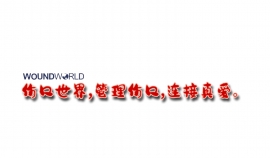
- 星期四, 16 1月 2025
Construction and validation of a risk prediction model for soldiers with frostbite in northeast China: a cross-sectional study
Sitong Wang1 , Xueyu Li2*, Yuli Fang2 , Qin Shu3 , Ruihang Ma1 and Di Wu2
Abstract
Background One of the challenges of physical training in extreme condition is frostbite, especially in Northeast China. In this study, we aimed to construct a risk prediction model for frostbite among soldiers in Northeast China, and verify its effect.
Methods 698 participants were selected via convenience sampling from Northeast China from December 2021 to January 2022 (winter). They were randomly divided into a training set (N=479) and a testing set (N=202) in a ratio of 7:3. All participants completed a researcher-made questionnaire on frostbite. The prediction model was constructed through the use of Logistic regression analysis, which was used to predict the independent risk factors for frostbite formation and screen significant indicators. The model’s performance was assessed using the receiver operating characteristic (ROC) curve and decision curve analysis (DCA) to evaluate the prediction efficiency and goodness of fit.
Results The incidence of frostbite in the training set was 19.83% (95 people), all of which were first-degree frostbite. Among them, frostbite in multiple parts was the most common (58.95%), followed by singular body parts like hands (24.21%), ears (11.58%) and feet (5.26%). Single factor logistic regression analyses showed that ambient temperature, ambient wind speed, outdoor stationary time, stationary status, and history of frostbite are independent risk factors that affect the occurrence of frostbite. Furthermore, we constructed the frostbite risk prediction model for soldiers in the northeastern region of China. The area under the receiver operating characteristic curve (AUC) for the risk of frostbite in the training set and testing set was 0.816 (95% CI, 0.770~0.862) and 0.787 (95% CI, 0.713~0.860), respectively. The Hosmer-Lemeshow test of the model showed χ 2=11.328 and P=0.184 (>0.05). The DCA curve indicated that most of the clinical net benefits of the model are greater than 0, demonstrating good clinical
Conclusion The constructed frostbite prediction model can effectively identify soldiers with a higher risk of frostbite. It provided theoretical support for commanders to take preventive measures to reduce the incidence of frostbite among soldiers and was of great clinical guiding significance.
Keywords Frostbite, China, Northeast region, Influencing factors, Prediction model
*Correspondence:
Xueyu Li
该Email地址已收到反垃圾邮件插件保护。要显示它您需要在浏览器中启用JavaScript。
1 Department of Emergency Medicine, General Hospital of Northern Theater Command, Shenyang, Liaoning 110016, People’s Republic of China
2 Department of Nursing, General Hospital of Northern Theater Command, Wenhua Road 83rd Shenhe Region, Shenyang, Liaoning 110016, People’s Republic of China
3 School of Nursing, Army Medical University, Chongqing 400038, People’s Republic of China
© The Author(s) 2024. Open Access This article is licensed under a Creative Commons Attribution-NonCommercial-NoDerivatives 4.0 International License, which permits any non-commercial use, sharing, distribution and reproduction in any medium or format, as long as you give appropriate credit to the original author(s) and the source, provide a link to the Creative Commons licence, and indicate if you modified the licensed material. You do not have permission under this licence to share adapted material derived from this article or parts of it. The images or other third party material in this article are included in the article’s Creative Commons licence, unless indicated otherwise in a credit line to the material. If material is not included in the article’s Creative Commons licence and your intended use is not permitted by statutory regulation or exceeds the permitted use, you will need to obtain permission directly from the copyright holder. To view a copy of this licence, visit http:// creativecommons.org/licenses/by-nc-nd/4.0/.

- 星期二, 14 1月 2025
A global retrospective study identifies higher rates of pernio in individuals with connective tissue disease
To the Editor: Pernio, also referred to as chilblains, is a rare inflammatory condition presenting as painful swelling and erythema of acral sites upon cold exposure.
While pathophysiology is uncertain, vasospasm is likely at play, akin to Raynaud syndrome. 1 Many cases of pernio are often thought to be idiopathic, but its presence often prompts further investigation. Currently, there is a paucity of literature exploring the association between pernio and connective tissue diseases (CTD) besides in cutaneous lupus.2
Therefore, we performed a population-level retrospective cohort study to evaluate the association between pernio and autoimmune CTD in the absence of Raynaud’s
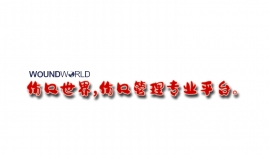
- 星期一, 13 1月 2025
Functional properties and skin care effects of sodium trehalose sulfate
Kazuhisa Maeda1 Zheng Zhou2 Miao Guo2 Jinlong Zhang2 Lang Chen3 Fan Yang2
1 School of Bioscience and Biotechnology, Tokyo University of Technology, Hachioji, Tokyo, Japan
2 Mageline Biology Tech Co., Ltd., Wuhan, Hubei, China
3 Bionics Program, Tokyo University of Technology Graduate School, Hachioji, Tokyo, Japan
Correspondence
Kazuhisa Maeda, School of Bioscience and Biotechnology, Tokyo University of Technology, 1404-1 Katakura, Hachioji, Tokyo 192–0982, Japan.
Email: 该Email地址已收到反垃圾邮件插件保护。要显示它您需要在浏览器中启用JavaScript。
Abstract
Background: It is known that heparinoid, a mucopolysaccharide polysulfate, is effective in improving rough skin and promoting blood circulation as medicines for diseased areas. However, heparinoid has a molecular weight of more than 5000 and cannot penetrate healthy stratum corneum.
Objective: We tested the efficacy of sulfated oligosaccharides with a molecular weight of less than 2000 on the human skin barrier function and moisturizing function.
Methods: We measured the transepidermal water loss (TEWL) of a three-dimensional human epidermis model cultured for 3 days after topical application of sulfated oligosaccharides, then observed the effects on TEWL suppression. The mRNA levels of proteins involved in intercellular lipid transport and storage in the stratum corneum, and moisture retention were measured using RT-qPCR.
Results: An increase in the mRNA levels of the ATP-binding cassette subfamily A member 12 (ABCA12), which transports lipids into stratum granulosum, was confirmed. Increases were also observed in the mRNA levels of filaggrin (FLG), which is involved in the generation of natural moisturizing factors, and of caspase-14, calpain-1 and bleomycin hydrolase, which are involved in the degradation of FLG. Antibody staining confirmed that the application of sodium trehalose sulfate to 3D model skin resulted in more ABCA12, ceramide, transglutaminase1, and FLG than those in controls. In a randomized, placebo-controlled, double-blind study, participants with low stratum corneum water content applied a lotion and emulsion containing sodium trehalose sulfate to their faces for 4 weeks. Sodium trehalose sulfate decreased the TEWL and increased the stratum corneum water content.
Conclusion: These results suggest that cosmetics containing sodium trehalose sulfate act on the epidermis by increasing barrier factors and moisturizing factors, thereby ameliorating dry skin.
KEYWORDS
moisturizing, skin barrier function, sodium trehalose sulfate, sulfated oligosaccharides
This is an open access article under the terms of the Creative Commons Attribution-NonCommercial-NoDerivs License, which permits use and distribution in any medium, provided the original work is properly cited, the use is non-commercial and no modifications or adaptations are made.
© 2024 The Authors. Skin Research and Technology published by John Wiley & Sons Ltd.
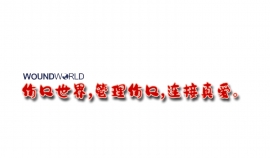
- 星期五, 10 1月 2025
Skin Barrier-Enhancing Effects of Dermabiotics HDB with Regulation of Skin Microbiota
Kyung Min Kim, Ji-Won Song, Chang-Wan Lee, Du-Seong Kim, Johann Sohn, and Seunghun Lee*
Biohealthcare R&D Center, HYUNDAI BIOLAND Co., Ltd., Ansan 15407, Republic of Korea
Received: June 26, 2023
Accepted: September 19, 2023
First published online:
October 19, 2023
*Corresponding author
Phone: +82-31-8085-7514
Fax: +82-31-8085-7605
E-mail: shunlee@hyundaibioland.
co.kr
Supplementary data for this paper are available on-line only at http://jmb.or.kr.
pISSN 1017-7825
eISSN 1738-8872
Copyright © 2024 by the authors. Licensee KMB. This article is an open access article distributed under the terms and conditions of the Creative Commons Attribution (CC BY) license.
In the regulation of inflammatory responses and skin homeostasis, the skin and its microbiota are closely related. Studies have reported that lactic acid bacteria extracts can improve the skin condition and microbiota. In our previous study, we developed probiotic lysates, which are efficacious in improvement of human skin cells and the skin barrier. The skin-moisturizing effect of Dermabiotics HDB (HDB) prepared with Lactiplantibacillus plantarum, and the correlation between changes in the skin microbiota and moisture contents, were evaluated and analyzed in clinical trials. The clinical parameters on the cheeks of 21 female participants were measured using biophysical tools before and after (2 weeks) using HDB or control. The skin microbes were collected and identified using 16s rRNA gene sequencing. HDB significantly improved moisture intensity, transepidermal water loss (TEWL), and hot flush level on the cheek. The beta-diversity of the skin microbiota was different from that of the control in the unweighted UniFrac principal coordinate analysis after using HDB. The genus Lawsonella demonstrated a positive correlation with TEWL and a negative correlation with the moisture contents of the keratin layer, regardless of the use of HDB and control. Conversely, after HDB use, the genus Staphylococcus was increased and associated with a lower hot flush level, while the genera of the phylum Proteobacteria tended to decrease, which is associated with an improved skin condition. Overall, HDB showed clinically proven effects, including skin moisturization with regulation of the skin microbiota.
Keywords: Probiotics, cell lysate, skin moisturizing, skin microbiota
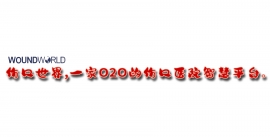
- 星期四, 09 1月 2025
Managing dry skin in patients with comorbidities or with advanced age: unmet needs and roles for products containing potential emollient-plus ingredients
Matthias Augustina , Enzo Berardescab, Ulrike Blume-Peytavic , Peter Elsnerd, Davide Scafae, Leonard Christopher Schmeele and Ehrhardt Prokschf a University Medical Center Hamburg-Eppendorf, Hamburg, Germany; bDr. Phillip Frost Department of Dermatology and Cutaneous Surgery, Miller School of Medicine, University of Miami, Miami, FL, USA; c Department of Dermatology, Venereology and Allergology, Charité-Universitätsmedizin Berlin, Berlin, Germany; dSRH Wald-Klinikum Gera, Gera, Germany; e Department of Radiation Oncology, University Hospital Bonn, Bonn, Germany; f Department of Dermatology, University of Kiel, Kiel, Germany
ABSTRACT
In dry skin (DS), skin-barrier function is easily disturbed and moisturizing factors in the stratum corneum are reduced. Despite being a common condition, DS is often overlooked in patients with advanced age or comorbid diseases. In September 2022, specialists in dermatology and skin care met to discuss unmet needs and management of patients with DS with existing medical conditions or DS induced by ongoing pharmacological treatments. There was consensus about the need to improve the current understanding and management of DS in patients with comorbidities, including type 2 diabetes, chronic kidney disease, radiodermatitis, and photodamaged skin. Clinical guidance related to optimal treatment of DS in patients with advanced age or comorbid diseases is needed. Dexpanthenol-containing emollients have been shown to provide rapid relief from the symptoms and clinical signs of skin inflammation and are well-tolerated and effective in terms of moisturizing and soothing DS and maintaining skin-barrier function. Thus, dexpanthenol-containing emollients may play an important role in future management of DS. Further research is needed to elucidate the efficacy of dexpanthenol across the spectrum of DS, irrespective of comorbidity status or age.
ARTICLE HISTORY
Received 12 December 2023
Accepted 27 February 2024
KEYWORDS
Dry skin; xerosis; dermatitis; comorbidities; dexpanthenol
